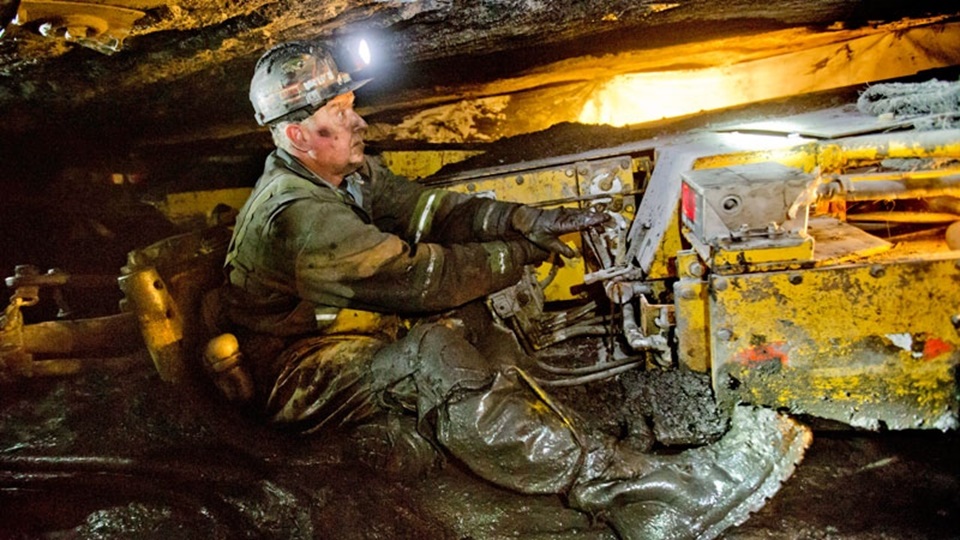
Silica dust, thrown into the air while mining has contributed to a staggering rise in cases of progressive, incurable, and deadly black lung disease in America’s coal miners. The insidious particulate is particularly common in the seams of low-quality coal found in central Appalachia, yet the Mine Safety Health Administration, or MSHA, has for decades pegged safe exposure levels at about twice what the government allows for every other occupation. On Tuesday, the agency finally announced an updated standard, outlining not only a new threshold for exposure but increased on-the-job safety measures and medical surveillance to protect workers.
“Miners deserve to go home safe and healthy each day and should never have to choose between sacrificing their lungs and providing for their families,” Chris Williamson, MSHA’s director, said in an address on Tuesday in Uniontown, Pennsylvania. “Miners also deserve to retire in dignity and enjoy the fruits of their labor with their loved ones. That’s why we’re all here today to take a long overdue step forward to protect miners from exposure to toxic silica dust.”
Williamson joined representatives of United Mineworkers of America and United Steelworkers in making the announcement, which miners and their advocates have spent years fighting for.
The need was urgent. Silica dust is toxic, and long-term exposure can cause a slow but fatal hardening of lung tissue called progressive massive fibrosis, or, as it’s known among miners and their families in coal-mining areas, black lung disease. The toxin increasingly abounds in mines as companies plumb thinner coal seams with greater impurities.
The rule, which spans hundreds of pages, covers all miners, regardless of what they dig from the earth, as well as anyone working construction on mine sites. It tightens medical surveillance for black lung by making more frequent clinical visits available to workers at no cost, outlines measures for silica dust monitoring, and, most importantly, lowers the exposure standard to the same 50 micrograms long enforced by the Occupational Safety and Health Administration — 50 micrograms of silica per cubic meter of dust during an eight-hour work day. It also outlined a renewed push for site compliance with stricter consequences, including, Williamson said, “citations, proposed penalties, immediate corrective actions, and if abatement does not occur in a reasonable period of time, withdrawal orders” leading to the closure of mines violating the rule.
“Ultimately, this rule’s success will depend on its implementation and enforcement,” he said.
And that, some worry, is exactly where the effort may fail. The new regulations still allow mine operators to conduct their own sampling, a longtime source of grievance for miners and their advocates who simply do not trust coal companies to accurately report silica levels.
“I’m pretty upset,” said Vonda Robinson, the vice president of the national Black Lung Association. Her husband John is 57 and succumbing to the disease; he was diagnosed 10 years ago, far younger than coal miners of previous generations. His doctor recommends a lung transplant, and he’s waiting until the last possible moment, because of the stress the operation places on the body. Those with silicosis tend to live about five years after a transplant.
In the 14 years since MSHA proposed updating the silica dust standard, Robinson and the National Black Lung Association lobbied lawmakers and rallied tirelessly for improved enforcement. Although she feels the regulation announced Tuesday is a “good” rule, “if it’s not enforced, we’re gonna be sitting in the same boat that we were in.”
Regulators allow mines to do their own monitoring because MSHA simply can’t afford to inspect every mine. To do that, the agency, which saw its budget peak in 1979, would have to overcome the consequences of years of budget cuts, and resulting staffing shortages, seen during every presidential administration of this century. Even under the more labor-friendly Biden administration, MSHA saw a smaller-than-expected budget increases in last year’s annual appropriations bill. Mining deaths have also jumped — up 31 percent in fiscal 2023, when 42 workers died — due to accidents, a troubling increase that may signal the agency is having trouble keeping up. The agency also tends to move slowly; it identified a cluster of black lung cases in the 1990s but failed to act.
Robinson also worries about other weaknesses in the new regulation. It uses an eight-hour day as an average to estimate silica exposure, but most miners work 10 or 12-hour shifts. It also allows for just four MSHA silica dust inspections per mine per year, a rate that may not capture the true risk of exposure. Recent investigations by National Public Radio also revealed the agency may have undercounted the number of black lung cases recorded in recent years because studies showing explosive growth have not yet been peer-reviewed.
Rebecca Shelton, the policy director at Appalachian Citizens Law Center, has been poring over the rule since its release. She is particularly concerned about coal companies’ continued control over testing since the industry has had a history of cheating on results. Shelton said monthly mine testing by MSHA would be ideal because the amount of dust in the air can change depending on where in a mine the company is working, ventilation, and other factors. The Mine Safety Health Administration dismissed the idea of creating a lower permissible exposure limit because it would be too costly for mine operators, something she said indicates “a prioritization of the economics of the industry over the lives of miners.”
For people like Brandon Crum, a radiologist who X-rays black lung patients and sees the damage first-hand, the disease, and MSHA’s response to it, is personal. He worked in the mines, the fourth generation in his family to do so. “It was a dusty job in dusty conditions,” he said.
Crum’s radiology office is in Pike County, Kentucky, on the border with West Virginia. He is among the few radiologists certified to read chest X-rays for signs of black lung. After documenting early signs of the alarming and continual rise in the disease, particularly among younger miners — those in their 30s and 40s who worked as little as 10 years underground before becoming so sick they needed transplants or died. In 2016, he joined three young men in making a video pleading for federal action to address the crisis; one of them has since died and the others have come to need lung transplants.
Crum says the disease cuts a wide swath through the region and affects those who have it, those who know them, and those who wonder if they might be next. He relayed his experiences in comments he made to the MSHA when the rule was in its draft stages last year. “I tried to put more of a personal touch on it,” he said. “It not only affects the men, but women and families and entire communities.”
The United Mine Workers of America is supporting the new rule, participating in its promotion, and celebrating it as the fruit of many years of hard work, which continued even as, union communications officer Erin Bates said, coal companies refused to acknowledge the scale of the disease. The union went around them to Congress, knocking on doors and making calls for decades. She concedes the regulation isn’t perfect, but is happy anything was adopted at all. “Obviously, we want it to be better,” she said, “but no matter what, more health and safety is better for our miners.”
This article was reposted from Grist.org.
We hope you appreciated this article. At People’s World, we believe news and information should be free and accessible to all, but we need your help. Our journalism is free of corporate influence and paywalls because we are totally reader-supported. Only you, our readers and supporters, make this possible. If you enjoy reading People’s World and the stories we bring you, please support our work by donating or becoming a monthly sustainer today. Thank you!










